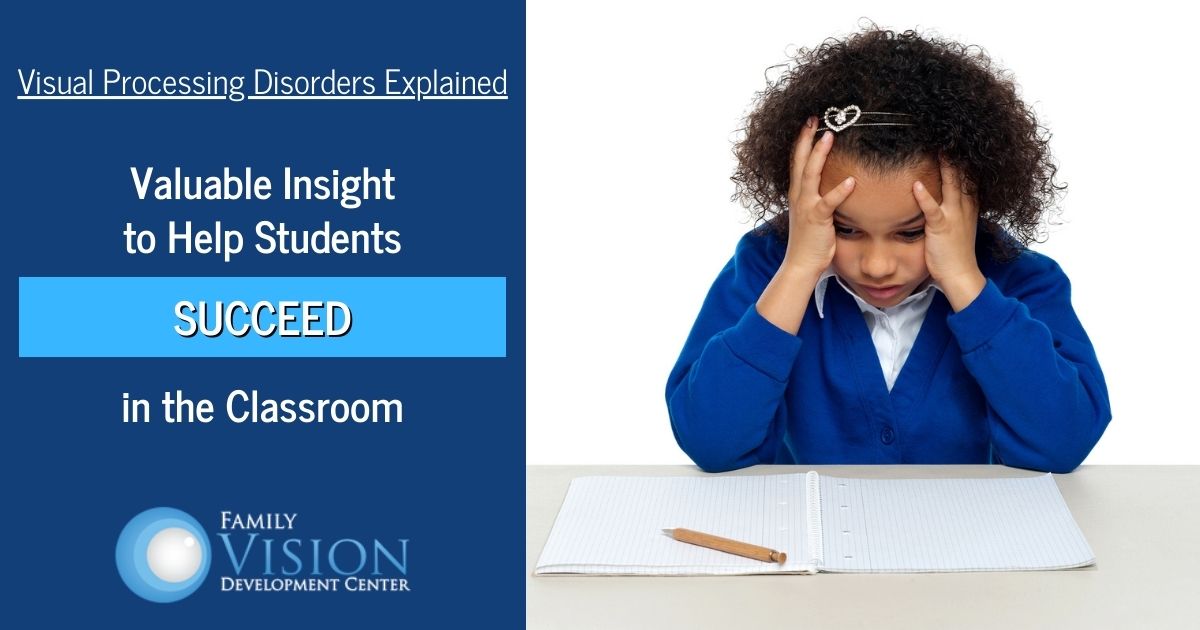The beginning of a new school year is an exciting time for students and parents alike. However, as students step into new classrooms, meet new teachers, and tackle fresh challenges, it’s important to remember that each child learns and processes information differently. For those with visual processing disorders, the school year can present unique challenges.
Understanding Visual Processing Disorders
Visual processing disorders, also known as visual perceptual disorders, refer to a range of issues that affect how the brain interprets visual information. These disorders can make it difficult for individuals to process, understand, and make sense of visual stimuli. While their eyesight might be normal, they struggle with tasks that require them to interpret and respond to visual information efficiently. This can cause a variety of difficulties in the classroom, including:
- Visual Discrimination: Difficulty distinguishing between similar letters, numbers, or shapes.
- Visual Memory: Struggles with remembering visual information, like spelling words or recognizing familiar faces.
- Visual Motor Integration: Challenges with tasks that involve hand-eye coordination, such as writing neatly or catching a ball.
- Visual Sequential Memory: Problems remembering the order of visual information, affecting reading comprehension and math problem-solving.
- Visual Closure: Difficulty recognizing an object or word when parts of it are missing.
Navigating the New School Year
For students with visual processing disorders, starting a new school year might come with a mix of excitement and apprehension. For both parents and teachers, being aware of potential challenges and adopting strategies to address them can lead to a more successful and fulfilling learning experience.
For Parents:
- Open Communication: Share your child’s needs and challenges with their teachers. This can foster a supportive learning environment and allow teachers to tailor their teaching methods accordingly.
- Professional Assessment: If you suspect your child might have a visual processing disorder, consult with a vision specialist. Early identification and intervention can make a significant difference.
- Home Support: Work with your child on exercises that strengthen their visual processing skills. This could involve puzzles, memory games, and activities that improve hand-eye coordination.
For Teachers:
- Varied Instructional Techniques: Use a mix of visual, auditory, and kinesthetic teaching methods to accommodate different learning styles. This can help students with visual processing disorders grasp concepts more effectively.
- Clear Instructions: Provide clear and concise instructions. Breaking down complex tasks into smaller steps can make them more manageable for these students.
- Visual Aids: Utilize visual aids like charts, diagrams, and color-coding to reinforce learning. These aids can assist students in organizing and comprehending information.
Consult with Family Vision Development Center for Visual Processing Disorders
The team at Family Vision Development Center is dedicated to helping our young patients achieve success in and out of the classroom. We understand that a visual processing disorder can make school extremely difficult and we are trained to help them overcome these challenges. Our vision therapy treatment options are tailored to each individual child to target and correct the unique difficulties they are experiencing. Contact us at 630-862-2020 to learn more about vision therapy or to schedule an appointment.
Family Vision Development Center is a full-service vision center offering innovative vision therapy services, post-concussive vision rehabilitation, comprehensive vision exams for eyeglasses and contact lenses, management of ocular diseases including glaucoma, diabetes, macular degeneration and cataracts, and a state-of-the-art optical center offering the latest designs in eyewear. We are dedicated to keeping our patients comfortable and well-informed and we will explain every exam and procedure and answer all of your questions. We accept both scheduled and emergency appointments, and offer convenient financing and insurance options to ensure that high-quality vision care is available and affordable to all of our patients.

